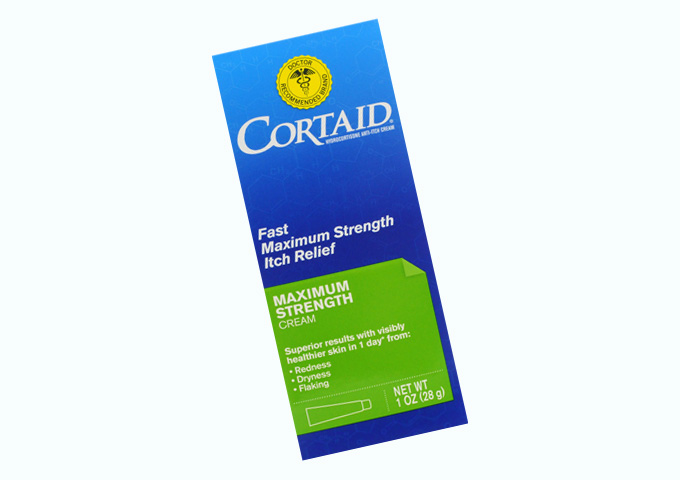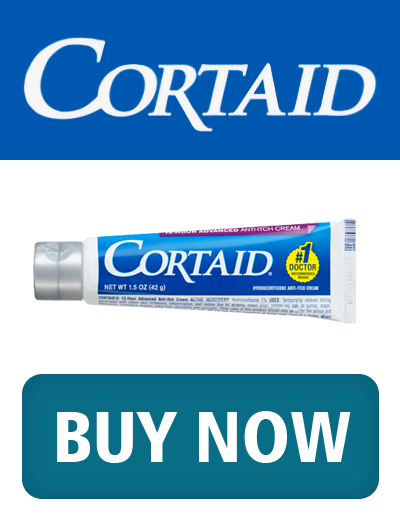Cortaid (Hydrocortisone)
Cortaid is a brand name for a topical medication that contains hydrocortisone as its active ingredient. Hydrocortisone is a mild corticosteroid that is commonly used to relieve itching, redness, inflammation, and discomfort caused by various skin conditions, such as insect bites, rashes, eczema, psoriasis, and allergic reactions.
When applied to the affected area, Cortaid helps to reduce inflammation and suppress the immune response, which can alleviate symptoms and promote healing. It is available in various forms, including creams, ointments, and lotions.
Uses
Cortaid is primarily used to relieve itching, redness, inflammation, and discomfort associated with various skin conditions. Some of the common uses include:
- Insect Bites and Stings: Cortaid can help reduce itching and inflammation caused by mosquito bites, bee stings, and other insect bites.
- Skin Rashes: It is commonly used to alleviate symptoms of skin rashes, such as contact dermatitis, poison ivy/oak/sumac rashes, and other irritant or allergic reactions.
- Eczema: Medicine can be used to manage mild to moderate eczema, a chronic skin condition characterized by dry, itchy, and inflamed skin.
- Psoriasis: For mild cases of psoriasis, Cortaid may help soothe the skin and reduce redness and scaling.
- Allergic Reactions: It can be used to relieve itching and inflammation caused by allergic reactions to various substances.
- Dermatitis: Cortaid is effective in treating various forms of dermatitis, including atopic dermatitis (eczema), seborrheic dermatitis, and irritant contact dermatitis.
- Minor Skin Irritations: It can be applied to minor skin irritations and inflammation resulting from minor cuts, scrapes, or burns.
Cortaid is generally considered safe for short-term use in appropriate doses and when used as directed.

Dosage
The dosage of Cortaid, or any hydrocortisone-containing medication, may vary depending on the specific product and the severity of the skin condition being treated. It is crucial to follow the instructions provided on the product label. Here are some general guidelines for using Cortaid:
- Age and Condition: The dosage may differ for adults, children, and infants. Always use the appropriate formulation and strength as directed for your age group and specific skin condition.
- Application: Wash and dry the affected area before applying the medication. Gently rub a thin layer of the cream, ointment, or lotion onto the affected skin. Avoid getting the medication in your eyes, nose, mouth, or open wounds.
- Frequency: Cortaid is usually applied two to four times a day, depending on the severity of the condition. Follow the recommended application frequency, and do not use it more often than prescribed, as overuse can lead to adverse effects.
- Duration: The duration of treatment will depend on the type and severity of the skin condition.
- Avoid Prolonged Use: Corticosteroids like hydrocortisone should not be used for extended periods without medical supervision, as prolonged use can lead to skin thinning and other potential side effects.
Overdose
Using too much Cortaid or any other hydrocortisone-containing medication can lead to an overdose. Overdosing on topical corticosteroids like hydrocortisone can cause adverse effects, particularly when used for prolonged periods or on large areas of the skin. Some potential symptoms of an overdose or excessive use of Cortaid may include:
- Thinning of the Skin: Prolonged and excessive use can lead to the thinning of the skin, making it more susceptible to injury and bruising.
- Skin Discoloration: Overuse may cause the skin to become lighter or darker in color than the surrounding skin.
- Increased Hair Growth: In some cases, excessive use of hydrocortisone can lead to increased hair growth in the treated area.
- Delayed Wound Healing: An overdose can interfere with the skin's ability to heal, leading to delayed wound healing.
- Skin Sensitivity: The skin may become more sensitive or prone to irritation with prolonged use.
- Allergic Reactions: In rare cases, an overdose or prolonged use may lead to an allergic reaction.
If you suspect an overdose or experience any unusual or severe side effects after using Cortaid, stop using the medication immediately and seek medical attention.
Precautions
When using Cortaid or any other hydrocortisone-containing medication, it's important to take certain precautions to ensure safe and effective use. Here are some precautions to keep in mind:
- Avoid Sensitive Areas: Do not apply Cortaid to the face, groin, or underarms. These areas are more sensitive and absorb medication more rapidly, increasing the risk of side effects.
- Avoid Open Wounds or Infections: Do not apply Cortaid to open wounds, cuts, abrasions, or areas with active infections. The medication can slow down wound healing and may increase the risk of infection.
- Limited Use on Children: Children may be more susceptible to the side effects of corticosteroids due to their smaller body size.
- Avoid Long-Term Use: Prolonged use of topical corticosteroids like hydrocortisone can lead to skin thinning and other adverse effects. Use Cortaid as directed, and avoid using it for extended periods without medical supervision.
- Monitor Side Effects: Watch for any signs of skin irritation or allergic reactions, such as rash, itching, redness, or swelling. If you experience any unusual or severe side effects, discontinue use and seek medical attention.
- Interactions: Some substances may interact with hydrocortisone, potentially affecting its effectiveness or increasing the risk of side effects.
- Discontinuation: Do not abruptly stop using Cortaid if it has been used regularly for an extended period. Tapering off the medication may be necessary to avoid withdrawal symptoms.
Side Effects
When used as directed and for short periods, Cortaid is generally well-tolerated and has minimal side effects. However, like any medication, it can cause side effects, especially when used excessively or for prolonged periods. Some possible side effects of Cortaid include:
- Skin Reactions: Mild skin reactions may occur, such as burning, itching, redness, or irritation at the application site.
- Skin Thinning: Prolonged or excessive use of Cortaid can lead to skin thinning, making the skin more fragile and prone to injury.
- Skin Discoloration: In some cases, the skin may become lighter or darker in color (hypopigmentation or hyperpigmentation) at the application site.
- Acne or Folliculitis: In some individuals, hydrocortisone use can lead to the development of acne or folliculitis (inflammation of hair follicles).
- Allergic Contact Dermatitis: Rarely, individuals may develop an allergic reaction to hydrocortisone, leading to allergic contact dermatitis.
- Delayed Wound Healing: Excessive use of corticosteroids can delay wound healing, so it's important to avoid applying Cortaid to open wounds.
- Systemic Effects: Although topical hydrocortisone is less likely to cause systemic side effects compared to oral corticosteroids, excessive absorption through the skin can lead to systemic effects, especially in children and infants.
- Eye Irritation: Avoid getting Cortaid into the eyes, as it can cause irritation.
- Increased Hair Growth: In some cases, prolonged use may lead to increased hair growth at the application site.
- Rash Worsening: If the condition being treated worsens or does not improve with Cortaid use, discontinue use.
It is crucial to use Cortaid as directed and avoid prolonged use without medical supervision to reduce the risk of side effects. If you experience any severe or concerning side effects, stop using the medication and seek medical attention.
Storage
Proper storage of Cortaid or any other medication is essential to maintain its effectiveness and safety. Here are some general guidelines for storing:
- Store in a Cool, Dry Place: Keep pharmaceutical product at room temperature, typically between 20°C to 25°C (68°F to 77°F). Avoid storing it in areas with high humidity, such as the bathroom, as moisture can degrade the medication.
- Protect from Light: Keep Cortaid in its original container, and protect it from direct sunlight or excessive light exposure.
- Keep Away from Children and Pets: Store Cortaid in a place where children and pets cannot access it. Consider using child-resistant containers when available.
- Check Expiration Date: Always check the expiration date on the product packaging before using Cortaid. Do not use the medication if it has expired.
- Avoid Freezing: Do not freeze Cortaid, as freezing temperatures can alter the medication's effectiveness.
- Follow Specific Instructions: Some formulations of Cortaid may have specific storage requirements.
- Proper Disposal: If you have unused or expired Cortaid, do not flush it down the toilet or throw it in the trash. Follow your local regulations for medication disposal or consult with a pharmacist for guidance.
Remember that medication storage is crucial to ensure that the product remains effective and safe to use.
